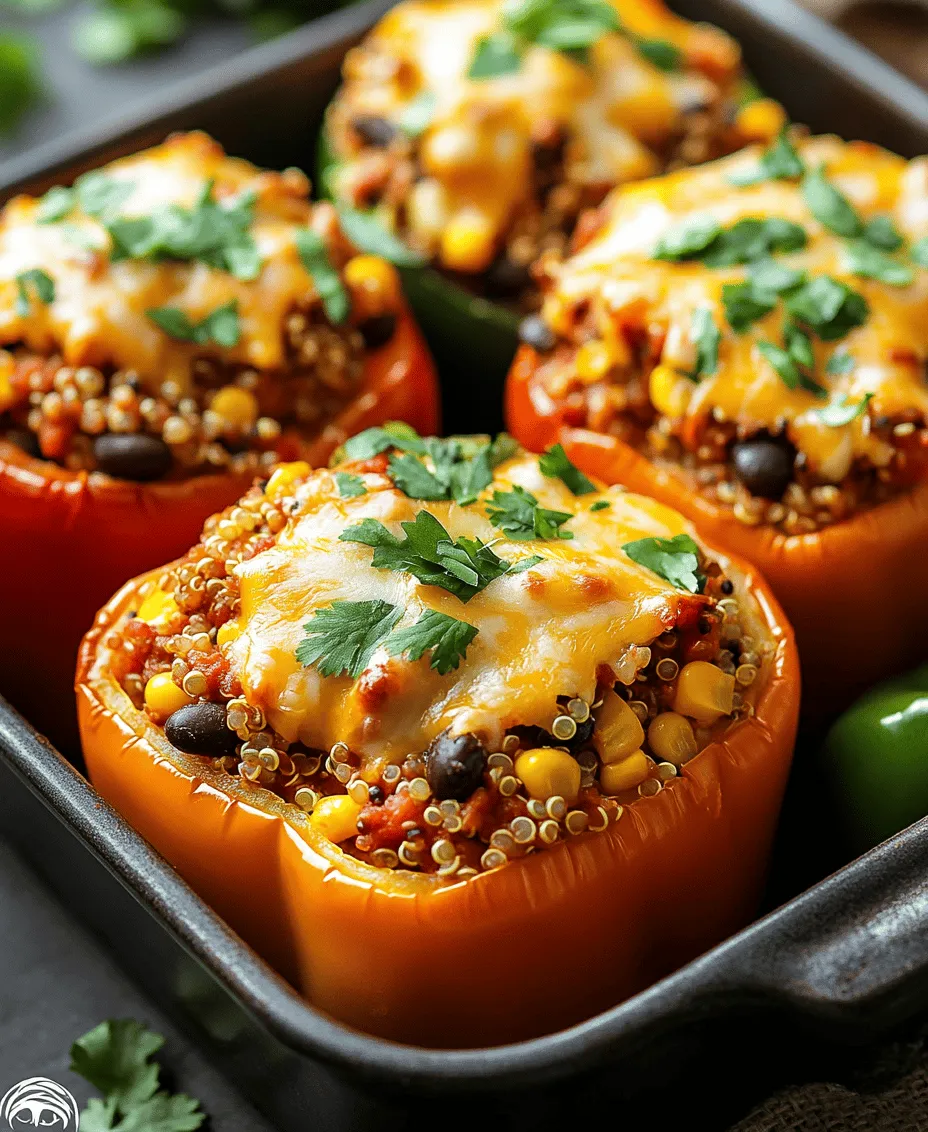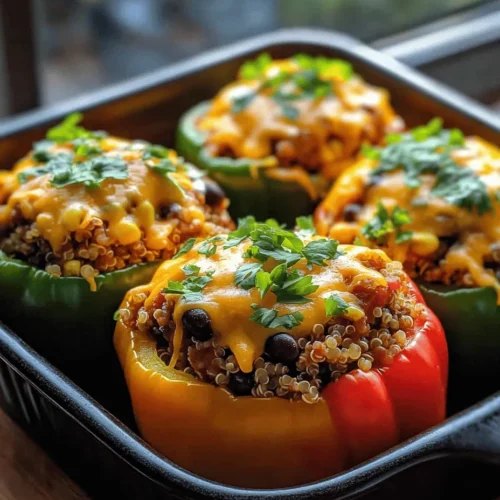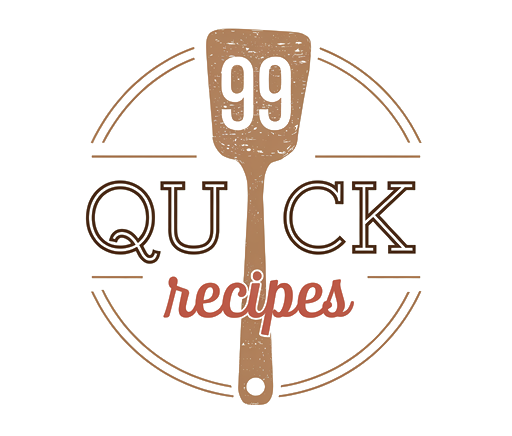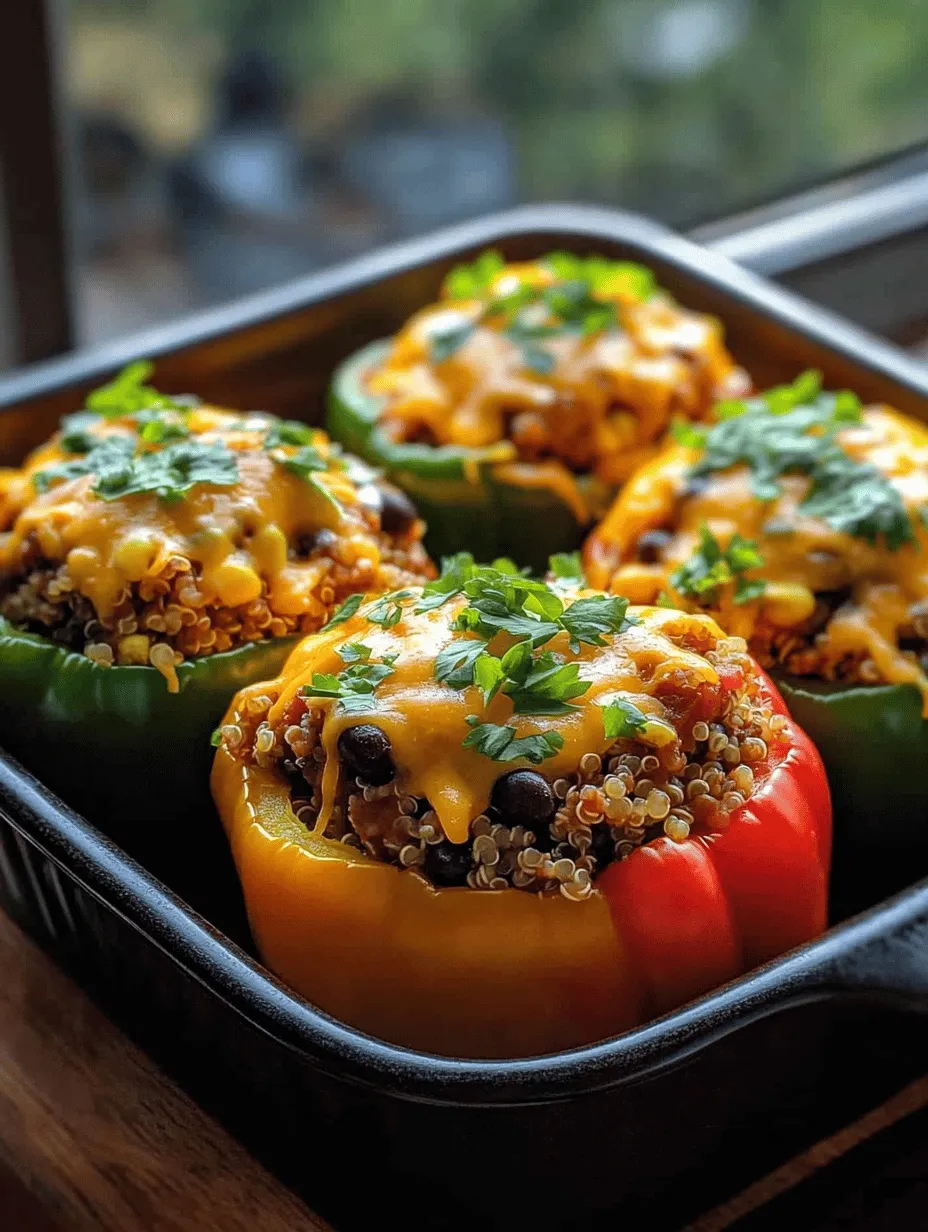Introduction
Stuffed bell peppers are an exceptional dish that combines vibrant colors, delightful flavors, and nutritious ingredients, making them a favorite for many. The dish features hollowed-out bell peppers filled with a savory mixture, often including proteins, grains, and vegetables, all baked to perfection. Not only are they visually appealing, but they also provide a fantastic way to incorporate a variety of food groups into one meal. Whether you’re looking for a quick weeknight dinner or a nutritious meal prep option, stuffed bell peppers with chicken are sure to satisfy your cravings and nourish your body.
This recipe is particularly appealing because it offers a plethora of health benefits. Bell peppers are rich in vitamins A and C, which are essential for maintaining a healthy immune system and skin. Ground chicken serves as an excellent lean protein source, making this dish suitable for those aiming to maintain a balanced diet. By adding whole grains like quinoa or rice and fiber-rich beans, you create a complete meal that is both filling and nutritious.
Using fresh ingredients is vital to enhancing the flavor and nutritional profile of stuffed bell peppers. Fresh vegetables, herbs, and spices not only result in a more vibrant taste but also elevate the overall quality of your dish. In this article, we will explore the history of stuffed peppers, the nutritional benefits of their core ingredients, and provide a detailed breakdown of the preparation steps to ensure your stuffed bell peppers turn out perfectly every time.
Understanding Stuffed Bell Peppers
Stuffed peppers date back centuries and can be found in various forms across many cultures. From the Mediterranean to Latin America, each region has its unique take on this versatile dish. In Mediterranean cuisines, stuffed peppers are often prepared with rice, herbs, and lamb or beef, while Latin American variations might include spices, beans, and corn. Regardless of the regional differences, the core concept remains the same: a delicious filling encased in a sweet, tender pepper.
The nutritional benefits of the primary ingredients in this recipe are noteworthy. Bell peppers, particularly the vibrant red, yellow, and orange varieties, are low in calories and high in essential vitamins. They are an excellent source of antioxidants, which help combat oxidative stress and inflammation in the body. Ground chicken is a lean protein that supports muscle growth and repair, making it an ideal choice for health-conscious individuals. When combined with quinoa or rice, you incorporate complex carbohydrates that provide sustained energy and contribute to a balanced meal.
Quinoa and rice serve as the backbone of the stuffing, providing texture and enhancing the dish’s nutritional value. Quinoa, often hailed as a superfood, is gluten-free and boasts a complete amino acid profile, making it a fantastic protein source for vegetarians and those looking to diversify their meals. On the other hand, rice is a staple across many cultures and offers a comforting, familiar flavor that pairs well with various ingredients. Additionally, beans can be added to the mix for extra fiber and protein, creating a satisfying and wholesome dish that pleases the palate.
Ingredients Breakdown
The success of stuffed bell peppers relies heavily on the quality of ingredients used. Here’s a breakdown of the core components:
Bell Peppers: Varieties and Health Benefits
Bell peppers come in a spectrum of colors, including green, red, yellow, and orange. While all bell peppers are nutritious, their health benefits can vary slightly based on ripeness. Red peppers, for instance, are the most mature and contain the highest levels of vitamins A and C. They are sweeter and more flavorful than their green counterparts, making them a popular choice for stuffing. Yellow and orange peppers provide a middle ground, offering a balance of sweetness and nutrients.
When selecting bell peppers for your stuffed pepper recipe, look for firm, shiny skins without blemishes or soft spots. Freshness is key, as crisp bell peppers will hold their shape better during cooking and provide a delightful crunch when bitten into.
Ground Chicken: Why it’s a Great Protein Choice
Ground chicken is an excellent choice for stuffing because of its mild flavor and versatility. It is lower in fat than traditional ground beef, making it a heart-healthy option that doesn’t compromise on taste. Additionally, ground chicken cooks quickly and absorbs flavors well, ensuring that each bite of your stuffed pepper is bursting with savory goodness.
When purchasing ground chicken, opt for organic or antibiotic-free varieties when possible. These options often have better flavor and quality, contributing to a more delicious final dish.
Quinoa vs. Rice: Nutritional Comparison and Flavor Profiles
Deciding between quinoa and rice for your stuffed bell pepper filling can impact both nutrition and flavor. Quinoa is a complete protein, meaning it contains all nine essential amino acids that our bodies require. Its slightly nutty flavor and fluffy texture make it an excellent base for stuffing, complementing the chicken and other seasonings beautifully.
In contrast, rice is a classic choice that many people are familiar with. It has a neutral taste that allows other flavors to shine through. Brown rice, in particular, is a nutritious option, as it retains its bran and germ, offering more fiber and nutrients compared to white rice. When choosing between the two, consider your dietary preferences and the taste profile you want to achieve.
Additional Ingredients: Importance of Spices and Vegetables
Beyond the primary ingredients, the stuffed peppers can be enhanced with a variety of spices and additional vegetables. Common spices such as cumin, paprika, and garlic powder can add depth and warmth to the filling, while fresh herbs like parsley or cilantro can provide a bright, refreshing finish.
Including vegetables in the stuffing mixture, such as diced onions, tomatoes, or zucchini, not only boosts the flavor but also increases the nutritional value of the dish. These additions can make your stuffed peppers even more satisfying and provide a range of textures and tastes that elevate the overall experience.
Preparation Steps in Detail
Creating delicious stuffed bell peppers begins with proper preparation. Here are the essential steps to ensure that your dish turns out perfectly:
Preheating the Oven: Why Temperature Matters in Baking
Before you begin preparing the filling, preheat your oven to the appropriate temperature, usually around 375°F to 400°F (190°C to 200°C). Preheating is crucial for even cooking and helps to achieve that desirable golden-brown finish on the bell peppers. An adequately heated oven ensures that the heat penetrates the peppers evenly, allowing the filling to cook thoroughly while maintaining the integrity of the peppers.
Preparing the Bell Peppers: Techniques for Hollowing and Keeping Them Intact
The first step in preparing your bell peppers is to select fresh, firm specimens. Once you’ve chosen your peppers, it’s time to hollow them out. Here’s how to do it effectively:
1. Wash the Bell Peppers: Rinse each pepper under cool water to remove any dirt or residues.
2. Cut the Tops Off: Using a sharp knife, carefully slice off the top of each pepper. Aim to leave about 1 inch of the pepper intact to ensure that the filling doesn’t spill out during cooking.
3. Remove the Seeds and Membrane: With a spoon, gently scrape out the seeds and the white membrane inside the pepper. Be careful not to puncture the sides of the pepper, as this could lead to leaking filling during baking.
4. Blanch the Peppers (optional): Some prefer to blanch the hollowed-out peppers in boiling water for 3-5 minutes before stuffing. This step softens the peppers slightly and enhances their sweetness while ensuring they cook evenly. If you choose to skip this step, just ensure that your filling is fully cooked before stuffing.
5. Arrange for Stuffing: Once hollowed and cleaned, place the bell peppers upright in a baking dish. You can use a muffin tin for added support if needed. This step ensures that the peppers remain stable during cooking, preventing any tipping that might lead to spilling.
By carefully preparing the bell peppers, you set the stage for a successful and delicious stuffed pepper dish that will impress anyone who tries it.
With a solid understanding of the ingredients and preparation steps, you are well on your way to creating a delightful meal that embodies both nutrition and flavor. Stay tuned for the next section, where we will delve into the detailed instructions for making the perfect stuffed bell peppers with chicken.

Cooking the Chicken: Tips for Achieving the Perfect Texture and Flavor
When it comes to stuffed bell peppers, the chicken is often the star of the dish. To ensure that your chicken is flavorful and has the right texture, consider the following tips:
1. Choosing the Right Chicken: Opt for lean chicken breast or thighs, as they provide a balanced flavor without being too greasy. Thighs tend to remain juicier, while breasts may require additional moisture.
2. Marinating for Flavor: Before cooking the chicken, marinate it for at least 30 minutes. A mixture of olive oil, garlic, lemon juice, salt, and pepper works wonderfully. This not only enhances the flavor but also helps to tenderize the meat.
3. Cooking Method: Whether you choose to grill, bake, or sauté your chicken, ensure it reaches an internal temperature of 165°F. Grilling or sautéing can give a nice char that adds depth to the flavor. If you bake it, ensure it doesn’t dry out by covering it with foil or using a meat thermometer.
4. Shredding the Chicken: After cooking, let the chicken rest for a few minutes before shredding. This helps retain juices. Shredded chicken integrates well into your stuffing, offering a perfect texture that combines nicely with other ingredients.
Mixing the Filling: Balancing Flavors and Textures for an Ideal Stuffing
Creating the perfect stuffing is crucial for delicious stuffed bell peppers. Here’s how to mix your filling for optimal taste and texture:
1. Base Ingredients: Start with your shredded chicken. Combine it with cooked rice or quinoa for a hearty base. These grains will absorb flavors and provide a satisfying texture.
2. Vegetable Additions: Enhance the filling by adding finely chopped vegetables such as onions, garlic, and tomatoes. Sauté these ingredients to release their natural sweetness and depth of flavor.
3. Herbs and Spices: Season the mixture with salt, pepper, and spices such as cumin or paprika for a bit of warmth. Fresh herbs like parsley or cilantro can elevate the dish with freshness. Aim for a balance of flavors—your filling should be savory, slightly sweet, and aromatic without overpowering the natural taste of the chicken and peppers.
4. Cheese for Creaminess: Consider adding cheese like shredded mozzarella or cheddar into the filling for creaminess and flavor. If you’re looking for a healthier option, low-fat cheese or nutritional yeast can provide a similar taste without the added fat.
5. Taste Testing: Always taste your filling before stuffing the peppers. Adjust seasoning as needed, ensuring the mixture is flavorful and satisfying on its own.
Stuffing the Peppers: Techniques for Packing and Layering Fillings
Stuffing the bell peppers requires some technique to ensure they are filled just right:
1. Prep the Peppers: Slice the tops off the bell peppers and remove the seeds. If you would like to add a little more flavor, lightly roast the peppers in the oven for about 10 minutes before stuffing to enhance their sweetness.
2. Layering the Filling: Start by spooning a portion of the filling into the pepper. Press down gently to eliminate any air pockets, then add more filling until it reaches the top. You can also layer some cheese on top of the filling before placing the pepper in the baking dish for a melted, bubbly topping.
3. Packing Firmly but Not Too Tight: Ensure to pack the filling firmly enough that it stays in place during baking, but not so tight that the peppers burst. Leave a little room at the top for the filling to expand as it cooks.
Baking Process Explained
Now that your peppers are stuffed, it’s time to bake them to perfection. Here’s what you need to know:
1. Importance of Steam in Cooking Stuffed Peppers: Covering the baking dish with foil traps steam, which is essential for cooking the peppers evenly and preventing them from drying out. The steam helps soften the peppers while the filling heats through.
2. Covering with Foil: How It Affects Moisture Retention: When you first place the stuffed peppers in the oven, cover them with foil to maintain moisture. After about 20 minutes, remove the foil to allow the tops to brown and the cheese to melt beautifully.
3. Timing for Baking: Preheat your oven to 375°F (190°C). Bake the stuffed peppers for about 30-40 minutes. The exact time may vary depending on the size of the peppers and the amount of filling. They are done when the peppers are tender, and the filling is heated through.
Serving Suggestions
Once your stuffed bell peppers are out of the oven and beautifully golden, it’s time to present them:
1. Presentation Ideas: Serve the stuffed peppers on a colorful platter or individual plates. Garnish with fresh herbs like parsley or cilantro for a touch of color. A drizzle of balsamic glaze can add a gourmet touch.
2. Pairing Recommendations: To create a full meal, pair your stuffed peppers with a side salad, garlic bread, or a light soup. A crisp green salad with a lemon vinaigrette complements the flavors of the peppers without overpowering them.
3. Variations for Dietary Preferences: For a vegetarian option, replace the chicken with black beans or lentils, adding extra vegetables like zucchini or corn. If you enjoy heat, consider adding jalapeños to the filling or using spicy cheese. For a low-carb option, substitute rice with cauliflower rice.
Nutritional Insights
Understanding the nutritional profile of your meal can help you make healthier choices:
1. Breakdown of Calorie Content and Macronutrient Distribution: A serving of stuffed bell peppers typically contains around 300-400 calories, depending on the specific ingredients used. The dish is well-balanced, offering a good source of protein from the chicken, healthy carbohydrates from rice or quinoa, and plenty of vitamins from the bell peppers and added vegetables.
2. Benefits of Including Vegetables and Lean Protein in Your Diet: Bell peppers are rich in vitamins A and C, while lean chicken provides essential protein for muscle repair and growth. Incorporating a variety of colorful vegetables ensures you get a broad spectrum of nutrients.
3. Discussion on Portion Sizes and Healthy Eating Practices: Aim for a balanced meal by serving one stuffed pepper with a side of vegetables or salad. Pay attention to portion sizes to maintain a healthy diet while enjoying your meal.
Conclusion
Stuffed bell peppers are a delightful and versatile dish that can cater to various tastes and dietary needs. Their vibrant colors and satisfying flavors make them a perfect centerpiece for family dinners or gatherings.
Encouraging experimentation with different ingredients can lead to new favorites—try swapping proteins, grains, or spices to create your unique version of this classic dish. Cooking is a joyful activity, and sharing these meals with loved ones fosters connection and creates cherished memories. Dive into the world of stuffed bell peppers, and enjoy the process of creating something delicious from scratch. Happy cooking!


